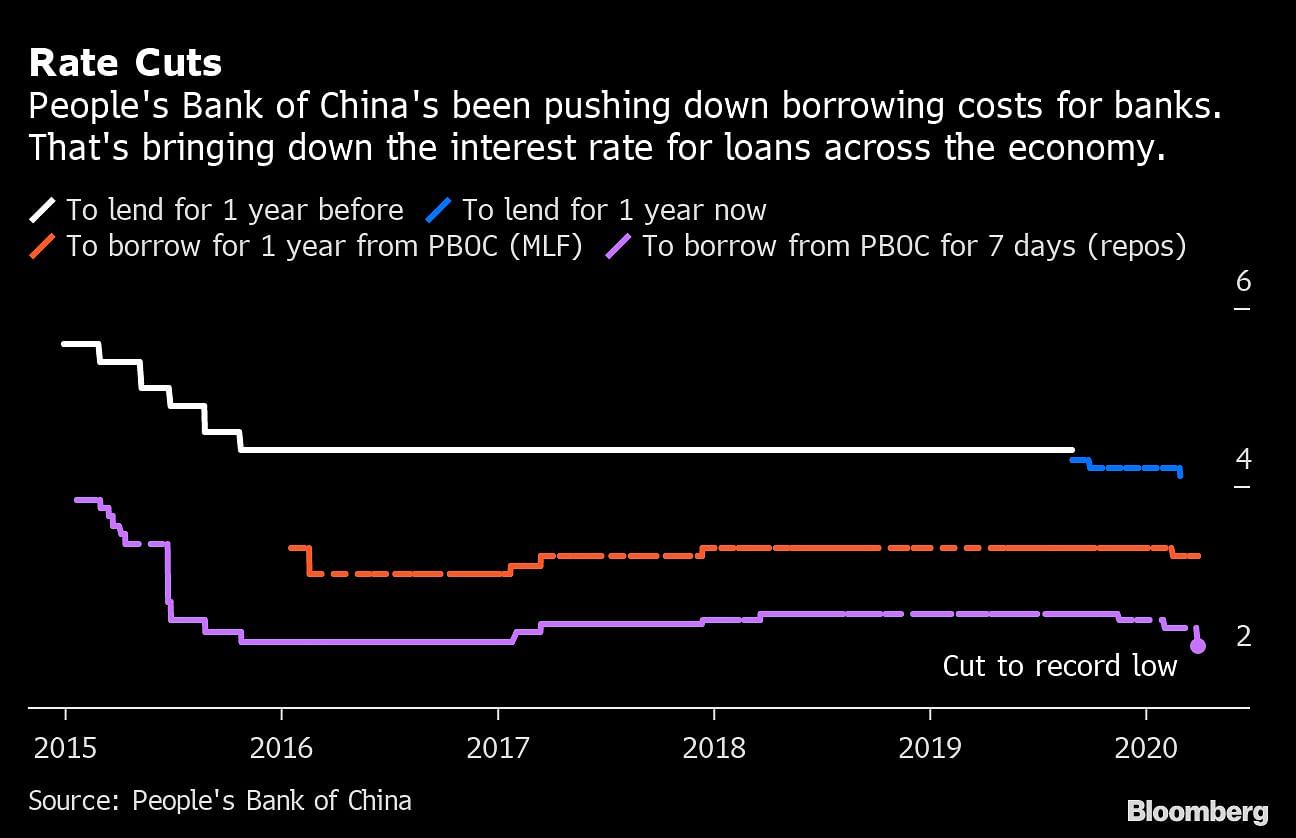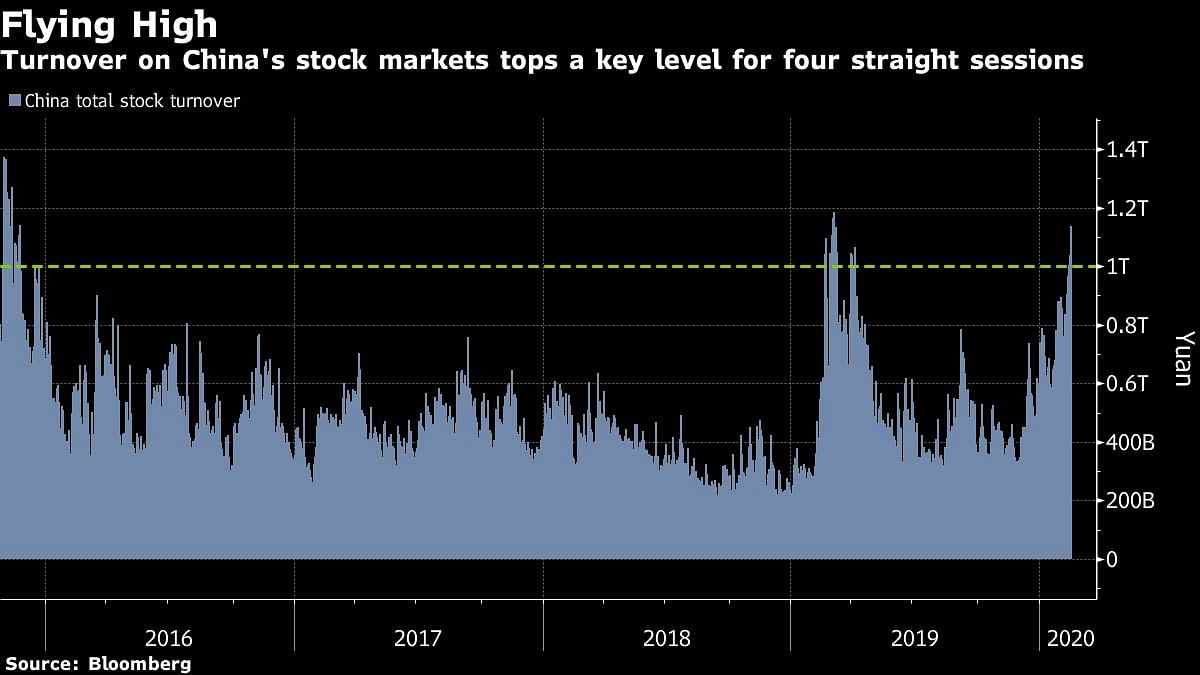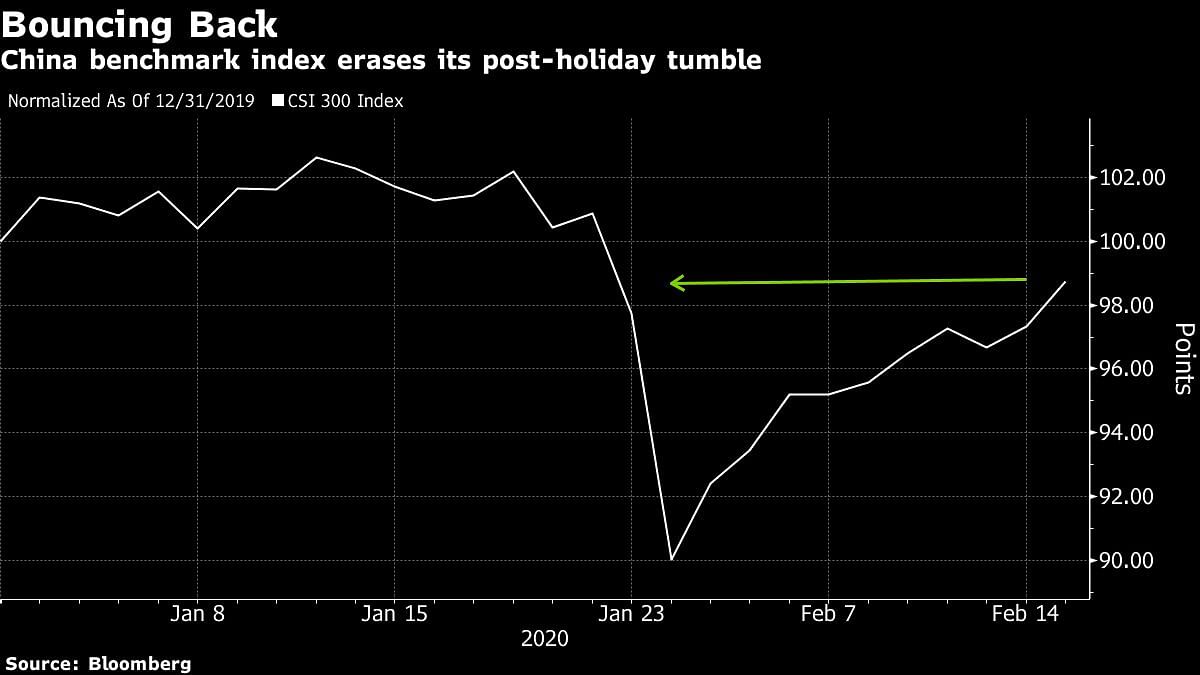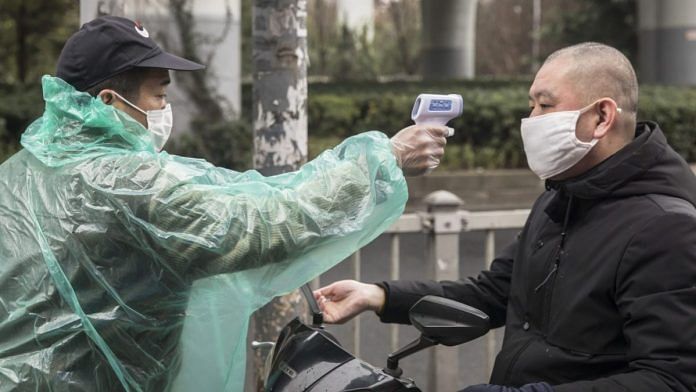Beijing/Shanghai: The deadly coronavirus outbreak has been met with a wide-ranging response from China’s policy makers seeking to cushion the economy, support financial markets and bolster investor confidence. Here’s a look at some of the steps taken, along with market reaction.
Thursday, April 9
MARKET ROLE: China’s top leaders in a statement pledged a raft of measures to strengthen the role of the market in land use, capital markets and labor mobility to build a more efficient economy. Policy makers called for improvements to the country’s stock market infrastructure, faster development of the bond market and actively expanding financial-sector opening. They also promised to push forward the market reform of interest rates.
Friday, April 3
TARGETED RRR: The People’s Bank of China said it would cut the reserve ratio requirement for smaller banks by 1 percentage point in two phases. The targeted RRR cut will release around 400 billion yuan ($56.4 billion) into the banking system, according to the PBOC.
Tuesday, March 31
CASH, BONDS: China’s cabinet calls for lower reserve-requirement ratios for small banks, more infrastructure bond sales by local authorities, and other steps including tax exemptions for people buying new-energy vehicles. The State Council meeting pledges another 1 trillion yuan of funding through the central bank’s relending and rediscounting program, essentially a cheap credit line for small commercial lenders.
Monday, March 30
MONETARY EASING: The PBOC reduces the interest rate on 7-day reverse repurchase agreements to 2.2% from 2.4% when it injected 50 billion yuan into the banking system. The cut is the largest since 2015.

Friday, March 27
FISCAL DEFICIT: China will increase its fiscal deficit as a share of gross domestic product, issue special sovereign debt and allow local governments to sell more infrastructure bonds as part of a package to stabilize the economy, Xinhua reports citing a Wednesday Politburo meeting.
Thursday, March 26
SUPPLY CHAINS: China Banking and Insurance Regulatory Commission issues notice urging financial institutions to increase support to companies playing key roles in supply-chains as they resume work and production.
Monday, March 23
*MARKET REACTION: China’s small-cap ChiNext Index ends down 4.6% to take its slide from February’s high to more than 20%, marking its entry into a bear market.
Sunday, March 22
POTENTIAL GROWTH: A senior central bank official says the economy’s return to its potential growth rate will be swift, with significant improvement expected in the coming three months. The official repeats earlier pledges to keep credit growth stable and make good use of the central bank’s targeted easing approach.
Also read: World economy watches and waits for China’s great reboot
Friday, March 20
NO CHANGE: China’s base rate for new bank loans is unexpectedly unchanged in March, indicating pressure on lenders’ margins and prompting calls for further cuts to policy rates. The one-year loan prime rate is kept at 4.05%, while the five-year tenor is also unchanged at 4.75%. China’s overnight repurchase rate, a gauge of short-term liquidity in the interbank market falls to its lowest since Bloomberg started to compile the data in 2006.
Monday, March 16
INJECTING LIQUIDITY: The PBOC offers 100 billion yuan ($14.3 billion) via the one-year medium-term lending facility, keeping the rate unchanged at 3.15%.
Friday, March 13
RRR CUT: China’s central bank cuts the amount of cash that banks have to set aside as reserves, in a move that will pump $79 billion into the economy. The measure will take effect from Mar. 16.
CONSUMPTION BOOST: The National Development and Reform Commission says it will take measures to lift consumption, including improving the competitiveness of its products and services and the supply of imported products.
Thursday, March 12
BORROW MORE: China allows a higher cap on foreign debt, a move aimed at helping smaller and private companies raise more funds overseas.
Wednesday, March 11
BOND SALES: China’s central bank and securities regulator say they would provide “a better policy environment and more convenient terms” for private firms to raise money by issuing bonds. The People’s Bank of China said 209.5 billion yuan in bonds related to fighting the virus have been issued as of Tuesday.
Wednesday, March 4
SOME SIGNALING: The likelihood of Chinese policymakers to further cut rates in open market operations this month is “not small,” state-run China Securities Journal writes in a front page commentary.
*MARKET REACTION: The yield on China’s 10-year sovereign bond falls to its lowest level in more than three years, after an emergency rate cut by the Federal Reserve fed expectations that China will ramp up stimulus. The yuan strengthens the most since December.
Sunday, March 1
DEBT RELIEF: Regulators provide more details on a prior pledge to extend repayment periods, saying qualified small- and medium-sized businesses with principal or interest due between Jan. 25 and June 30 can apply for a delay to the end of the second quarter. In Hubei province, the center of the outbreak, the waiver applies to all companies.
Tuesday, Feb. 25
CHEAP CREDIT: China pledges 500 billion yuan of relending and rediscounting funding to commercial banks for loans to small firms and the agricultural sector. The interest rate of the funding will be lowered by 25 basis points. The government will also waive value-added taxes for small firms in Hubei from March to May, and lower the tax rate to 1% from 3% for small firms in the rest of the country
Monday, Feb. 24
CONSIDERING CUTS: The PBOC is reviewing whether to cut the benchmark deposit rate due to the outbreak of the coronavirus, according to Deputy Governor Chen Yulu, who also said the central bank will guide borrowing costs lower.
*MARKET REACTION: China’s stock market turnover tops one trillion yuan for the fourth consecutive day, the first time that has happened since Nov. 2015.

Saturday, Feb. 22
SUPPORT BANKS: A PBOC officials says the central bank will conduct a financial inclusion review soon on commercial banks and offer qualified lenders discounts on their reserve ratios.
Friday, Feb. 21
CHANGING STANCE: China’s top leaders pledge “more flexibility” in monetary policy and to be more “proactive” in using fiscal policy, indicating a greater easing bias compared with their previous stance, according to meeting details released late Friday.
*MARKET REACTION: The CSI 300 Index adds more than 4% this week, its largest gain since June, while the Shanghai equity benchmark is set for its biggest weekly outperformance versus MSCI’s global gauge in almost a year.
Thursday, Feb. 20
EVEN LOWER: China’s banks lower the benchmark borrowing costs for new corporate and household loans. The one-year loan prime rate is lowered to 4.05% from 4.15% last month, and the five-year tenor is set at 4.75%, down from 4.8%.
Tuesday, Feb. 18
* MARKET REACTION: China’s stock recovery nears $1 trillion, drawing skeptics preparing for a sell-off. Expectations that the PBOC will continue easing monetary policy pushes China’s yield curve to its steepest level since 2015.
Monday, Feb. 17
RATE CUT: The PBOC provides medium-term funding to commercial lenders and cuts the interest rate it charges for the money, offering 200 billion yuan of one-year loans. The rate is lowered by 10 basis points to 3.15%, the lowest since 2017.

* MARKET REACTION: The CSI 300 recoups all of its losses following the record $720 billion sell-off across the nation’s stock market.
Sunday, Feb 16
FISCAL SUPPORT: With the death toll and number of infections continuing to climb, China says it will implement measures to reduce corporate taxes and cut government expenses.
Saturday, Feb. 15
PRICE RISES: Financial regulators and central bank hold joint press conference, stressing the virus outbreak won’t cause large price rises.
Friday, Feb. 14
GRACE PERIOD: China’s banking regulator takes a further step to shield the industry, saying that defaults resulting from the coronavirus outbreak won’t be included in non-performing loans for a period of time.
Thursday, Feb. 13
RATINGS FIRMS: Securities Association of China issues guidance for credit ratings firms, calling on them to be “reasonable and prudent in adjusting ratings.”
Tuesday, Feb. 11
SELL DEBT: China says it will allow local governments to sell another 848 billion yuan of bonds before March, as authorities continue to look for ways to offset the economic shock of the coronavirus.
Saturday, Feb. 8
DEBT FINANCING: China to take more steps to support debt financing for companies fighting the virus, according to the country’s top economic planner.
Friday, Feb. 7
PRIORITIZE GROWTH: Finance industry regulators hold first joint press conference post-virus; central bank official says growth will be prioritized over debt control.
Tuesday, Feb. 4
MORE SUPPORT: Central bank pumps a net 400 billion yuan into the banking system, the largest single-day addition since January 2019. It also sets the yuan’s reference rate stronger than the currency’s official close on Monday and the key 7 level.
Monday, Feb. 3
LIQUIDITY: The PBOC adds a net 150 billion yuan to money markets. The total injection announced is 1.2 trillion yuan, the largest single-day addition of its kind in data going back to 2004.
RATE CUT: Central bank trims the rates it charges for 7-day and 14-day reverse repurchase agreements by 10 basis points each.
YUAN FIX: China sets yuan fix stronger than the key 7 per dollar level as markets reopen.
* MARKET REACTION: Chinese stocks see their worst rout since the burst of an equity bubble in 2015. The CSI 300 Index of companies listed in Shanghai and Shenzhen closes 7.9% lower while the yuan weakens past 7 per dollar.
Saturday, Feb. 1
COUNTERING CORONAVIRUS: China’s central bank and regulators across the foreign exchange, securities, banking and insurance sectors issue more than 30 supportive measures to counter the impact of the coronavirus outbreak. Among them:
- Provide banks 300 billion yuan for relending
- Extend grace period on new asset management rules for some firms
- Lower lending rates and fees for companies most affected by the outbreak
- Allow some insurers to raise their investment in equities from existing cap
- Permit some share-pledge contracts to be extended by as long as six months
- Open “green channels” for issuing bonds related to fighting the outbreak – Bloomberg
Also read: China’s blunders in Wuhan should settle the debate about democracy and economic progress



